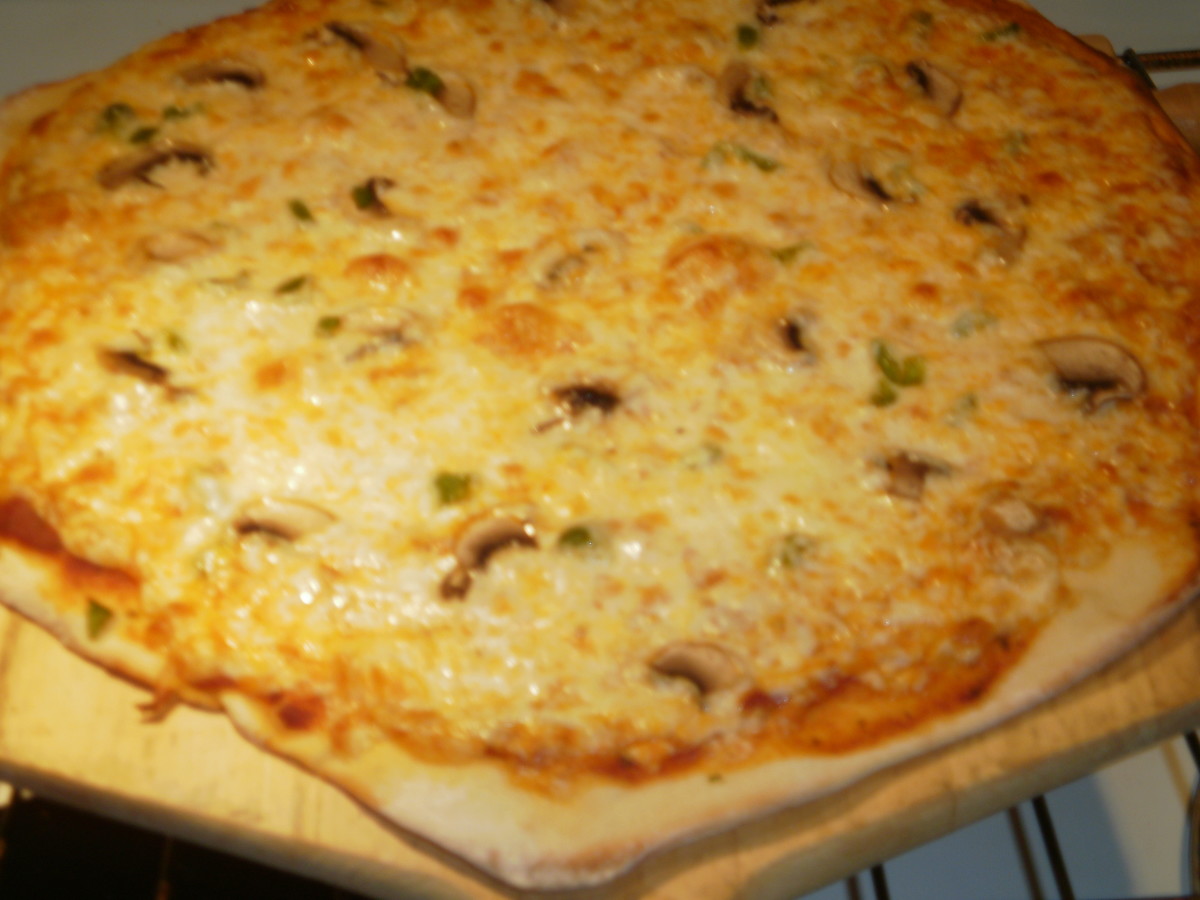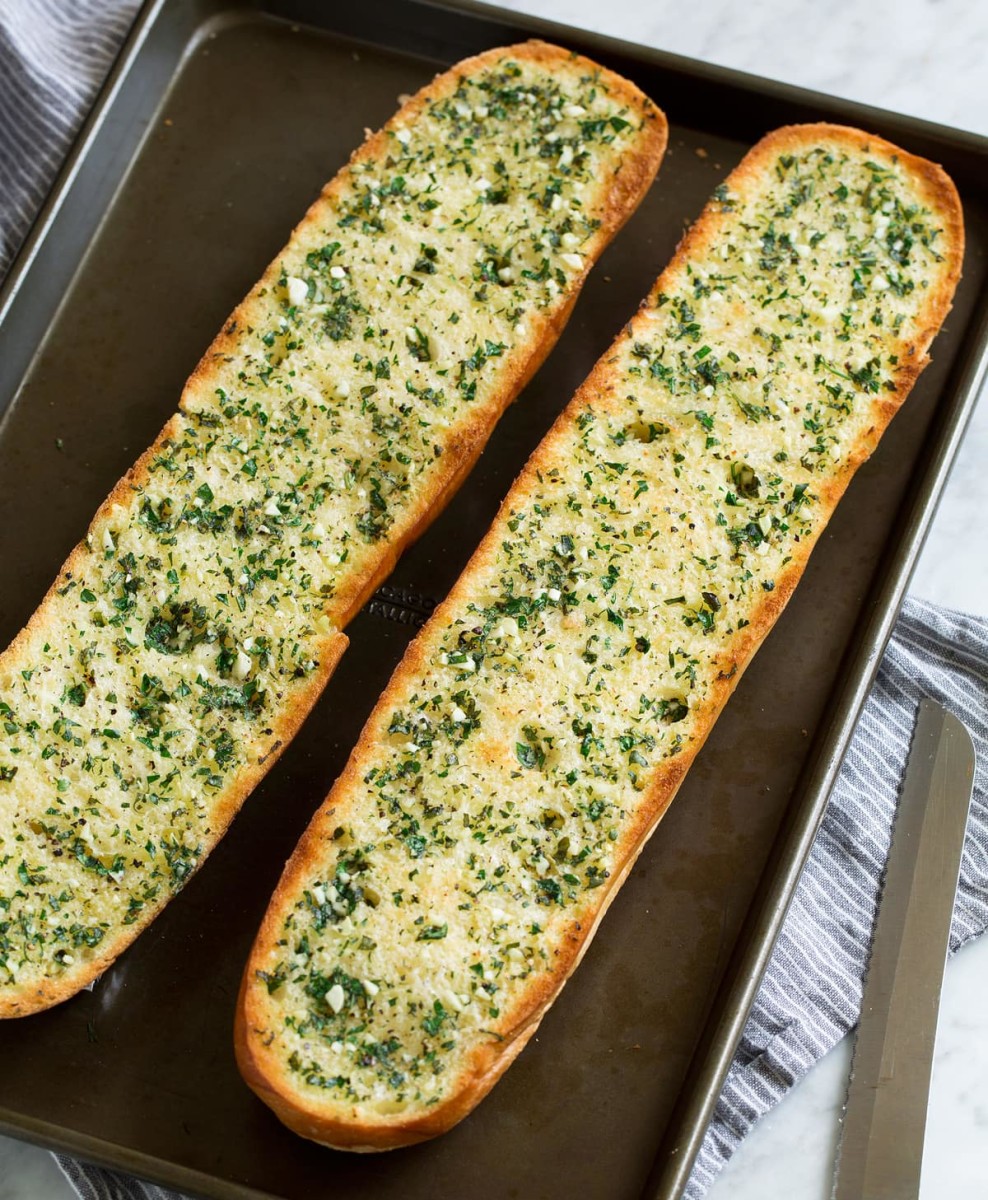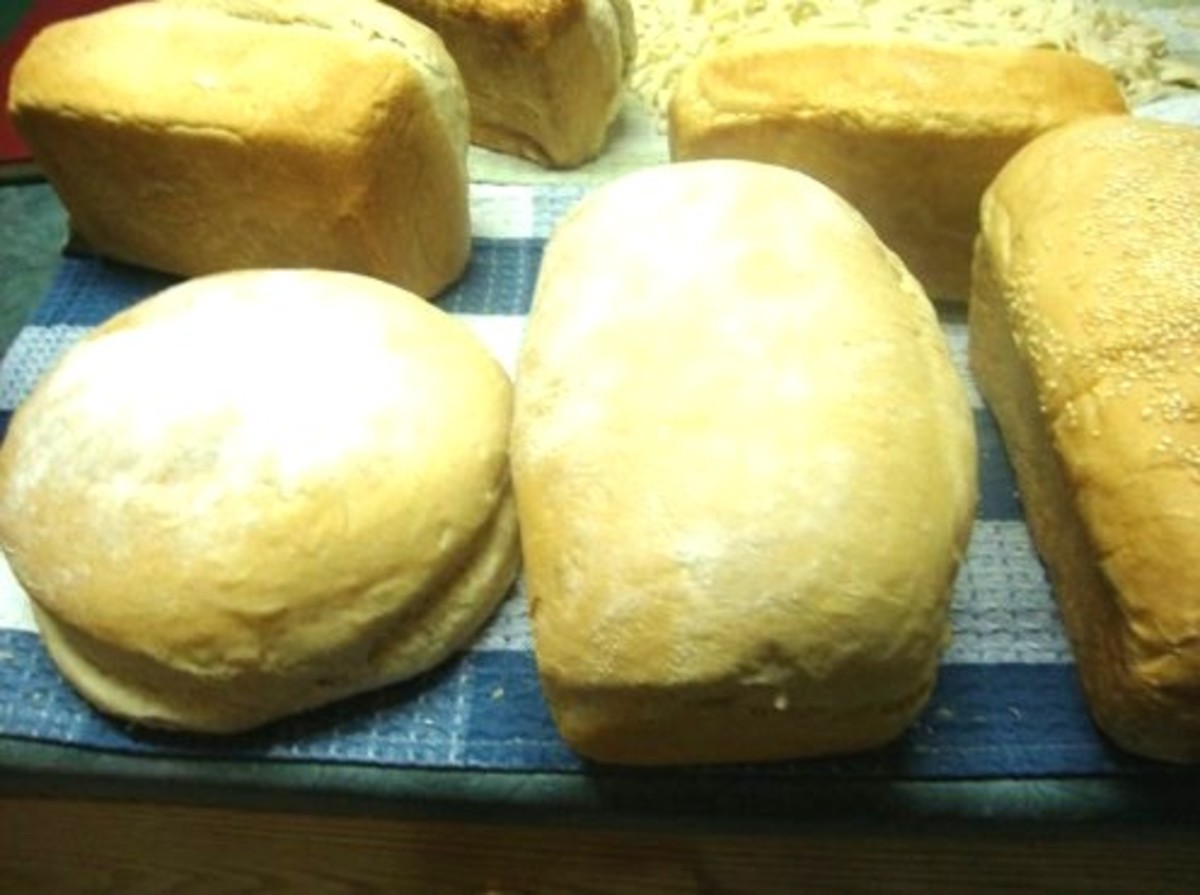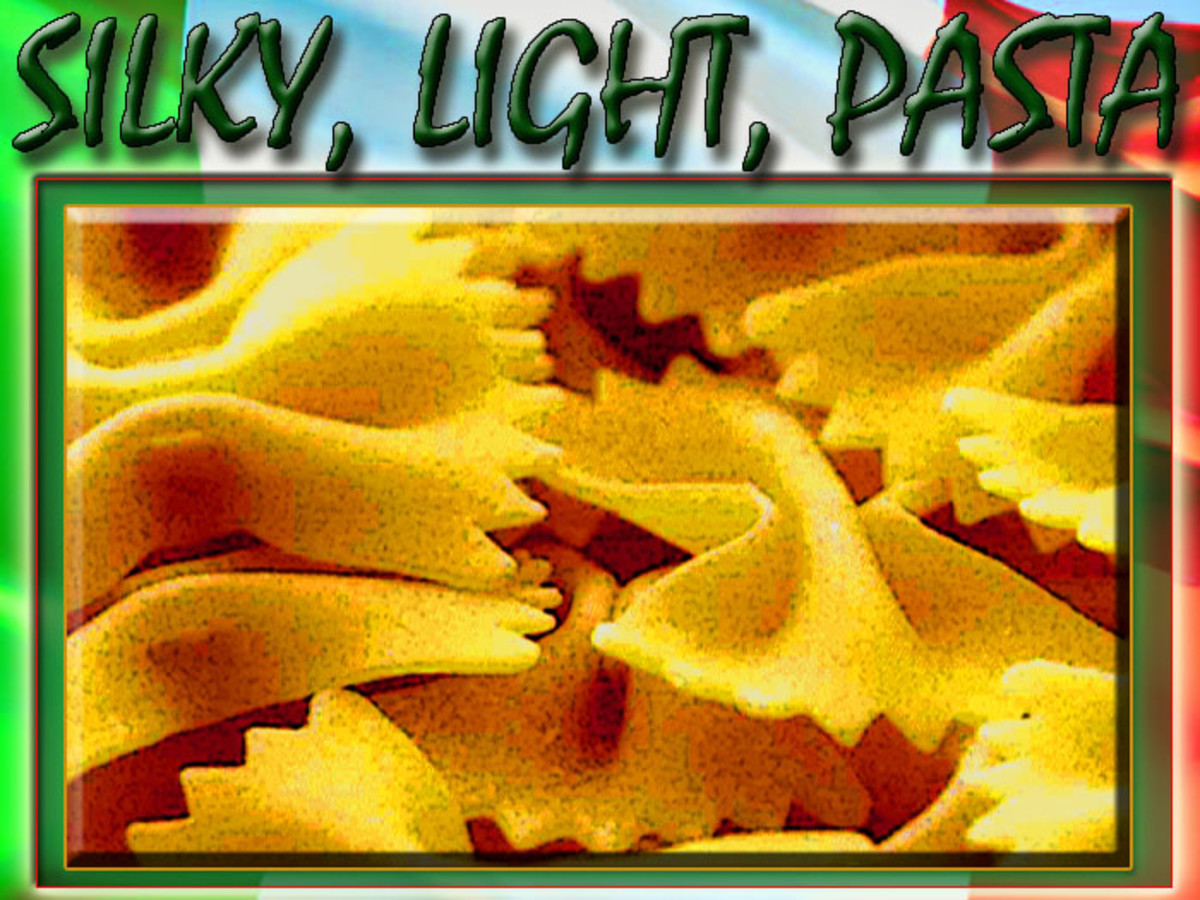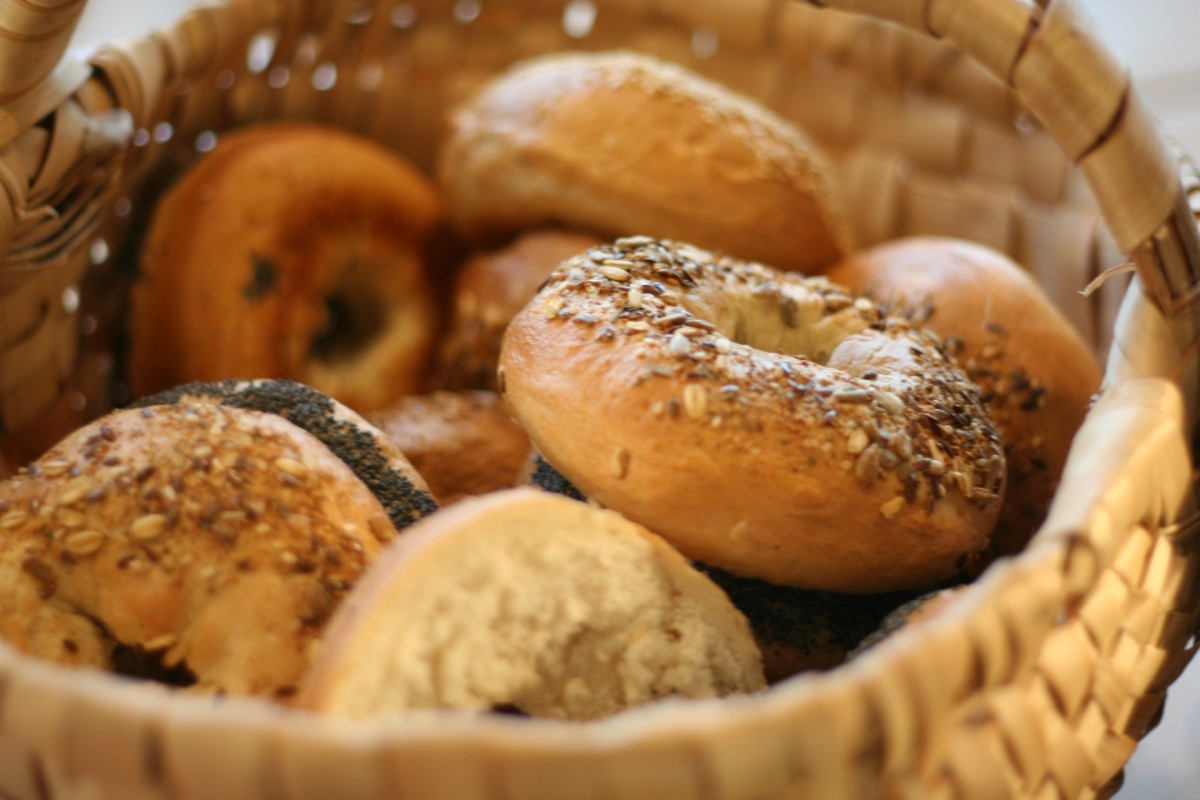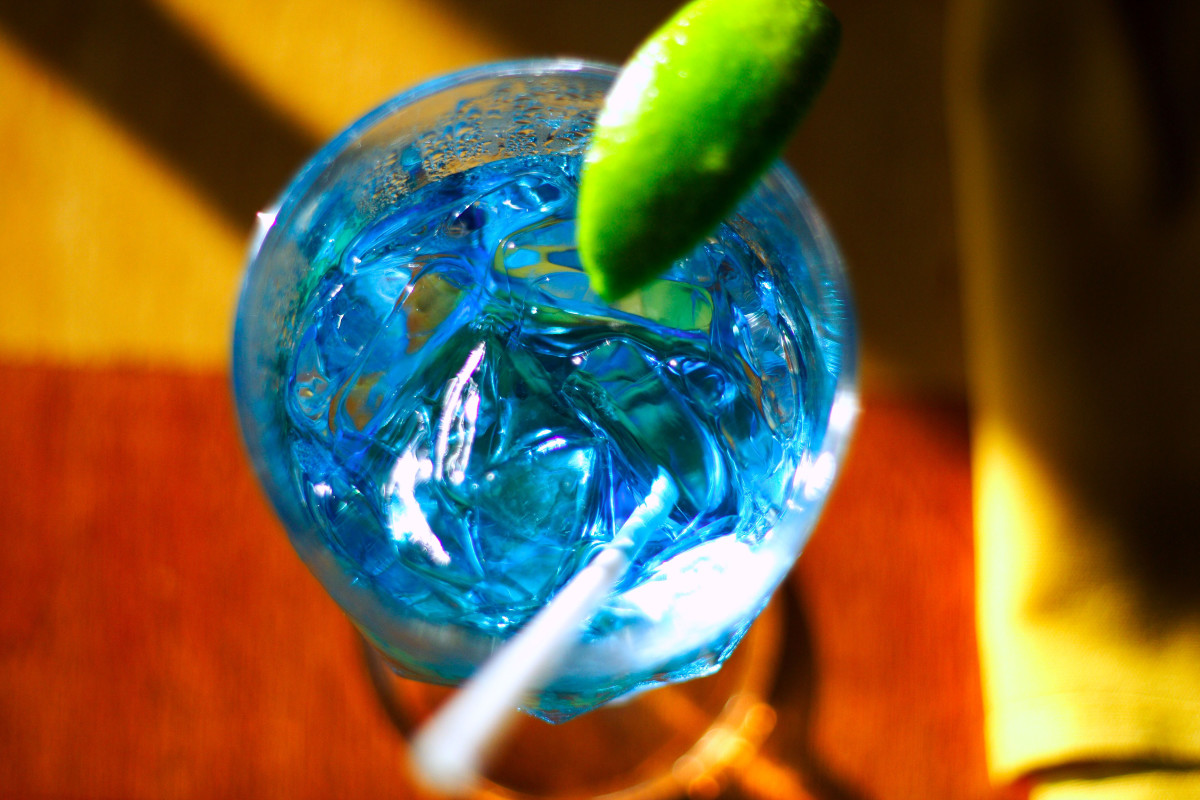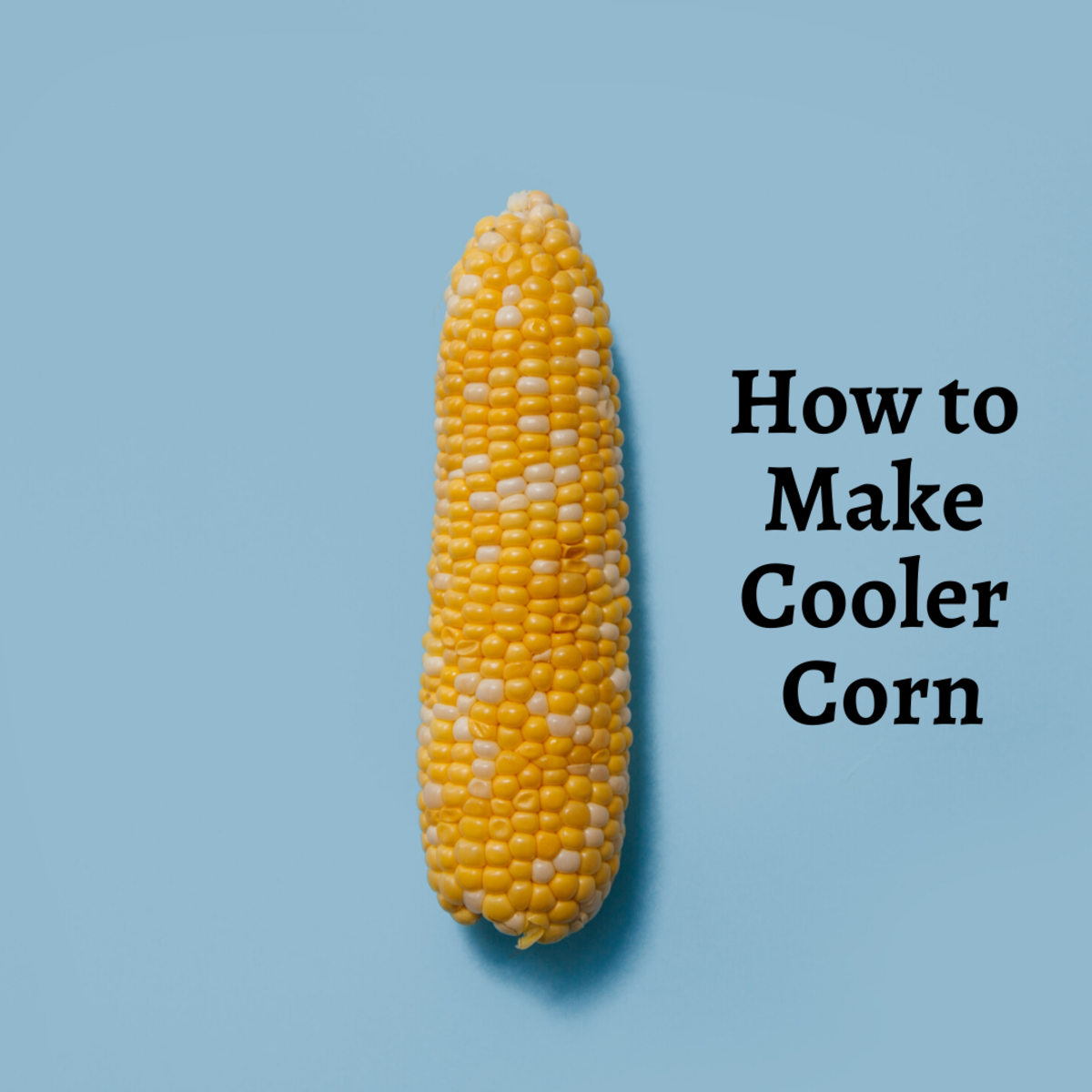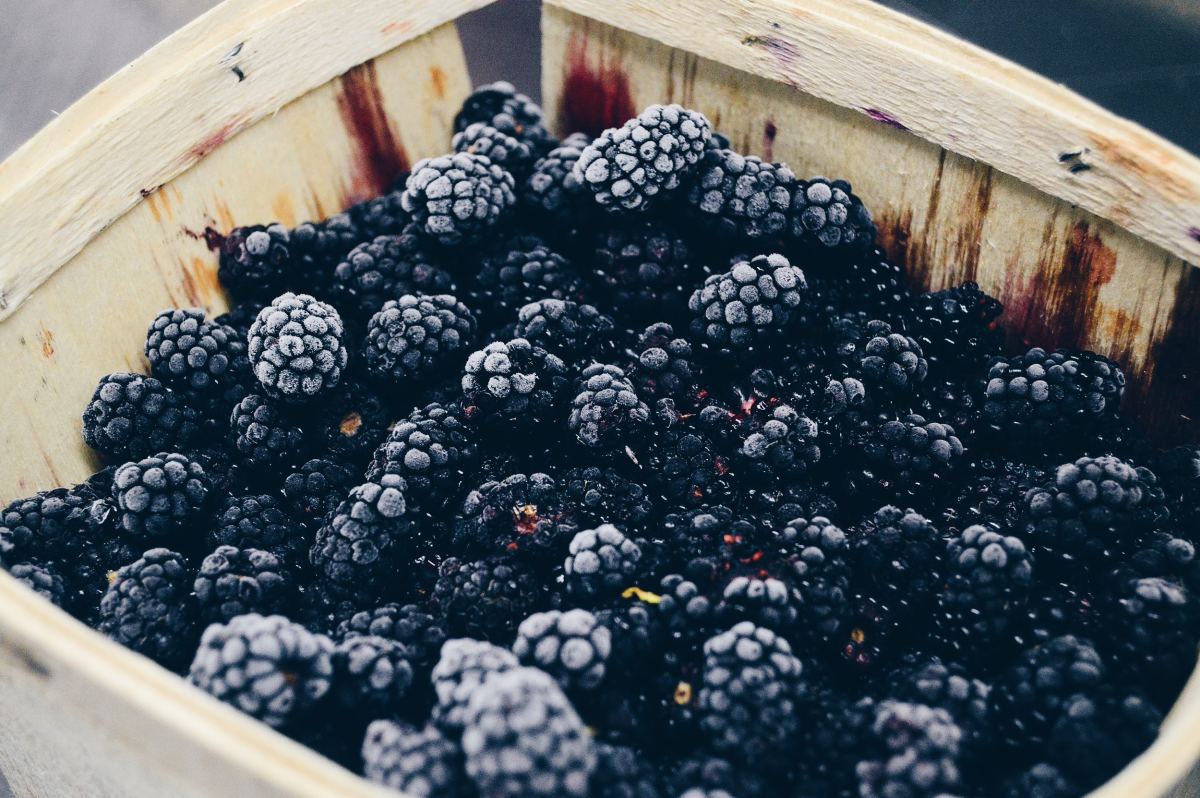Epic Real Food Fail: Spaghetti Stuffed Garlic Bread
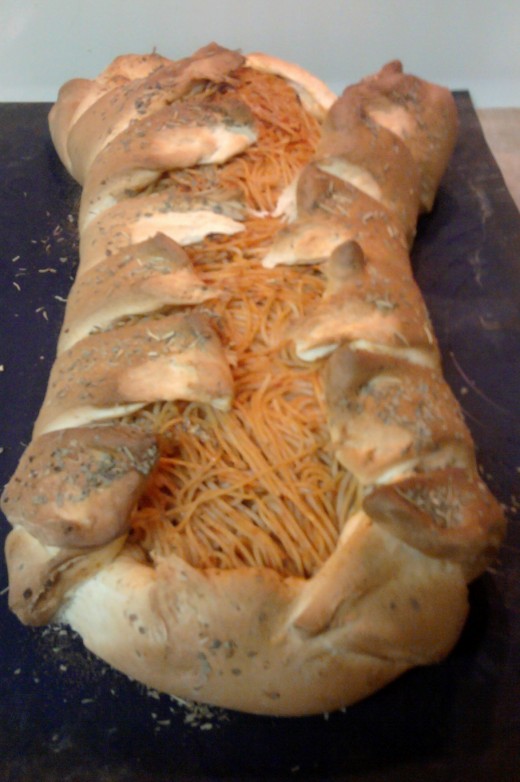
"Real food" is undeniably trendy and good for you. It isn't, however, always appealing to the whole family and sometimes you just want an easy dish that everyone will eat. Spaghetti stuffed garlic bread goes from pantry to table in sixty minutes and only requires simple ingredients that you probably already have on hand.
Every item in this recipe can be upgraded to create a more "real" dish. Vegetable enriched homemade pasta and organic spaghetti sauce certainly won't destroy it. Baking tasty bread entirely with whole wheat flour can be a challenge but it can be done. This recipe can also be made more mainstream and inexpensive with all purpose white flour and regular pasta sauce. It's food, not brain surgery, so have fun with it.
The basic recipe
Filling ingredients
1/2 box fiber enriched pasta (approximately 7 ounces)
1/2 jar natural spaghetti sauce (approximately 12 ounces)
Dough ingredients
1 c natural oats ground to flour in a food processor or blender
2 c bread flour
2 T sugar
1 1/2 T yeast
1/2 t salt
1 1/8 c warm water
2 T diced garlic
1 T oil (I use coconut oil but butter or olive oil will work)
1 c cheese (optional)
1. Cook the pasta
Start boiling the water then start making the dough in step two. For cooking times, follow the directions on the box. If it has different boiling times for baked pasta dishes and boil only then use the baked time. If the box provides an al dente cook time then use that. Set a timer when you dump in the pasta. You'll be busy when it's done but you'll need to drain it immediately to avoid overcooking. If you prefer to salt, oil, or spice your pasta water then please do.
Busy Mom Tip : Go ahead and cook the whole box. It's not like you aren't planning to eat again this week. You may later decide you want more or less filling and if you're already putting a container of extras in the fridge then pasta management can slide right off your list of things to worry about.
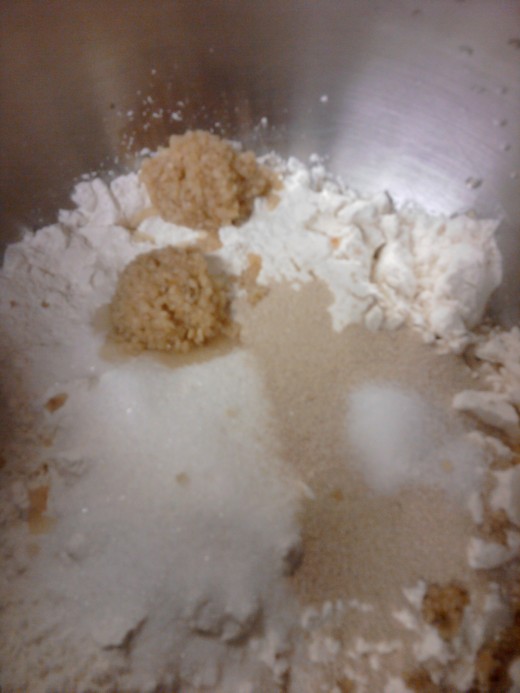
2. Make the dough.
Mix the dough ingredients and knead thoroughly. In an electric mixer with a dough hook or food processor with a dough attachment this will probably take six to eight minutes. If using the dough setting of a breadmaker then consult the directions of the machine.
If it's too wet and sticking to the sides of the mixer add more flour, one tablespoon at a time. If it's too dry add warm water a tablespoon at a time. You want a soft, elastic dough with all the ingredients well incorporated. The oil in the dough makes it somewhat forgiving so don't stress too much about over-kneading. The variation in the amount of flour and water is caused by the variable density of flour.
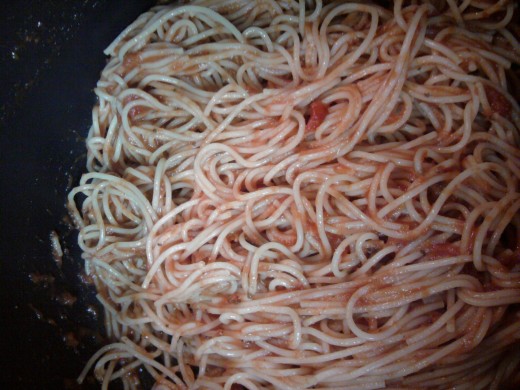
3. Prep the pasta
Drain the now cooked pasta and mix with the sauce. The sauce should be room temperature or chilled. The goal is to get the filling as moist as you'd like and to bring down the temperature of the pasta so it's not so hot that it kills the yeast or so cold that it impairs the rising of the bread. If you can comfortably stick your finger in and leave it there then it's the right temperature.
4. Roll out the dough and fill
Using just enough flour to prevent sticking, roll out the dough into a 1/4 inch thick rectangle. It should be as long as you'd like your finished loaf (aka no longer than your longest edged baking sheet) and twice as wide. I roll out on a silicone mat to make transferring the finished loaf to a pan easier but it's not necessary.
Move your sheet of dough to the baking pan before filling. It can be cooked on silicone, parchment, or a greased pan. Preferably you'll use an edged baking sheet just in case you have a few leaks. If you prefer to risk a cookie sheet I'd suggest erring on the side of less sauce in the pasta. If a cake pan is all you have then stuff it in there but treat it like a sheet pan.
Place the sauced pasta down the center of the roll leaving enough dough on the edges to cover the pasta when folded. There are several methods of covering (a basic pinch fold and lacing are shown below) but whatever you choose make sure to leave steam vents. If you're going to add cheese, top the pasta with it before you fold closed the bread.
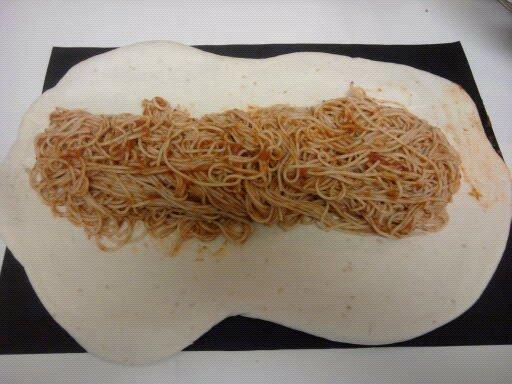
Lacing the dough
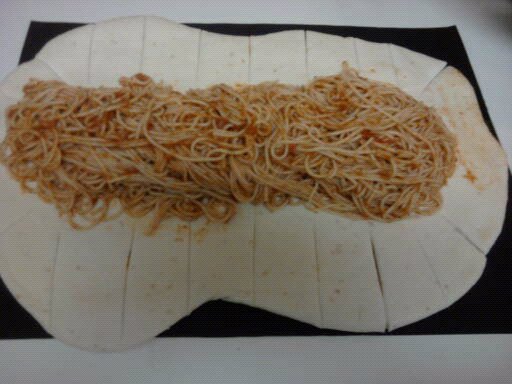
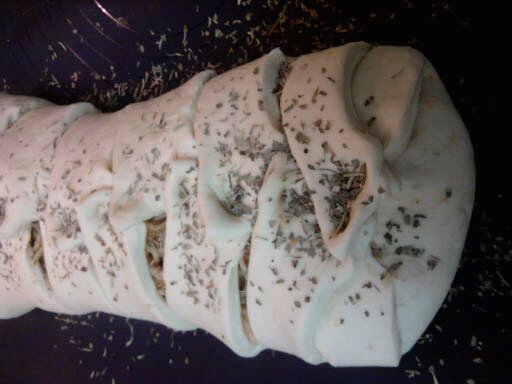
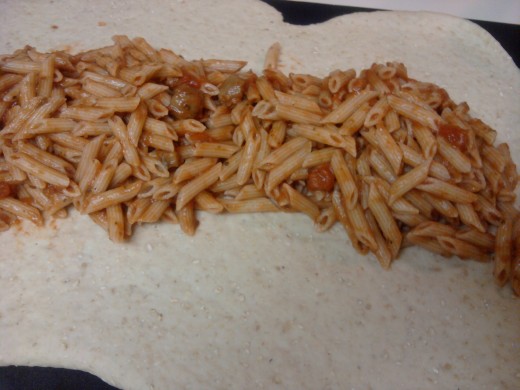
Pinch fold the dough
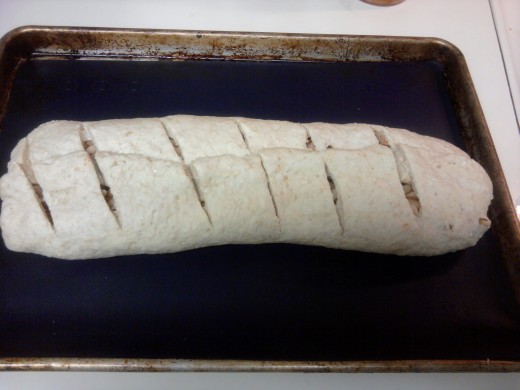
5. Turn on the oven and take a break.
Turn the oven to 375 to preheat. Rest the dough for 15 minutes in a warm place free from drafts. It should rise and may change shape a bit. It will still be tasty. Lacing is more forgiving of an enthusiastic rise than pinch folding.
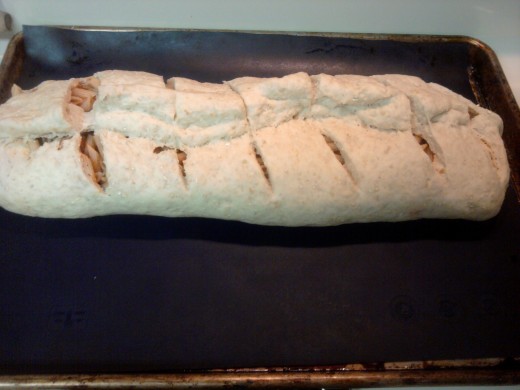
6. Bake at 375 for 30-35 minutes.
You want a nicely colored crust and a cooked bottom. Depending on what you're baking on it may be crisp or softer but you want it cooked through enough to eat. If the top is over browning but it doesn't seem quite done drape it with aluminum foil and keep cooking.
Practical tip: I have a lousy oven so I keep a baking stone on the bottom shelf to even out the temperature. If the bottom of the dough is a bit soggy I'll slide it onto the stone to crisp. This is where cooking on silicone or parchment pays off.
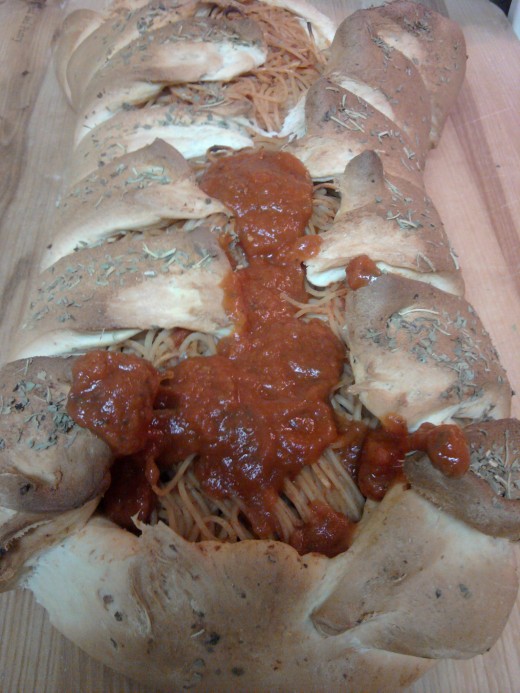
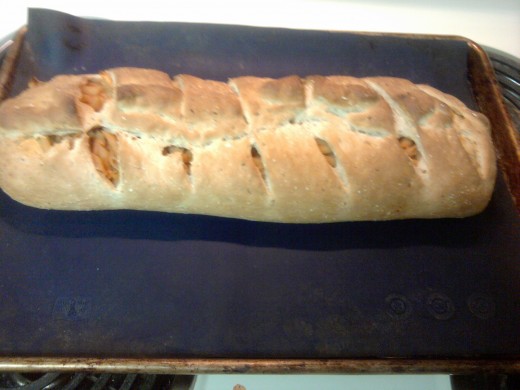
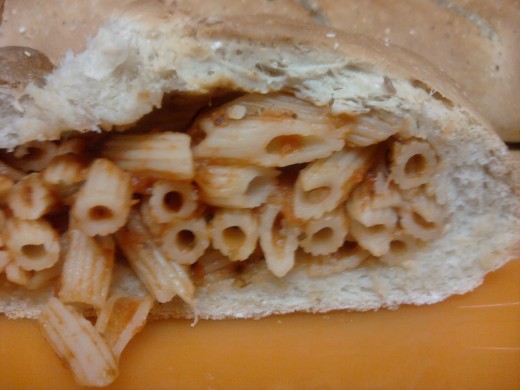
About the author: Brandi Ryan has scratch cooked a ridiculous amount of food over more years than she cares to admit. She specializes in dairy free, soy free, kid friendly fare. Her non-culinary specialties include snark, sarcasm, and satire.

